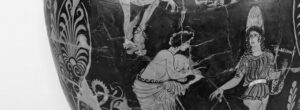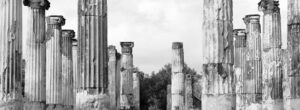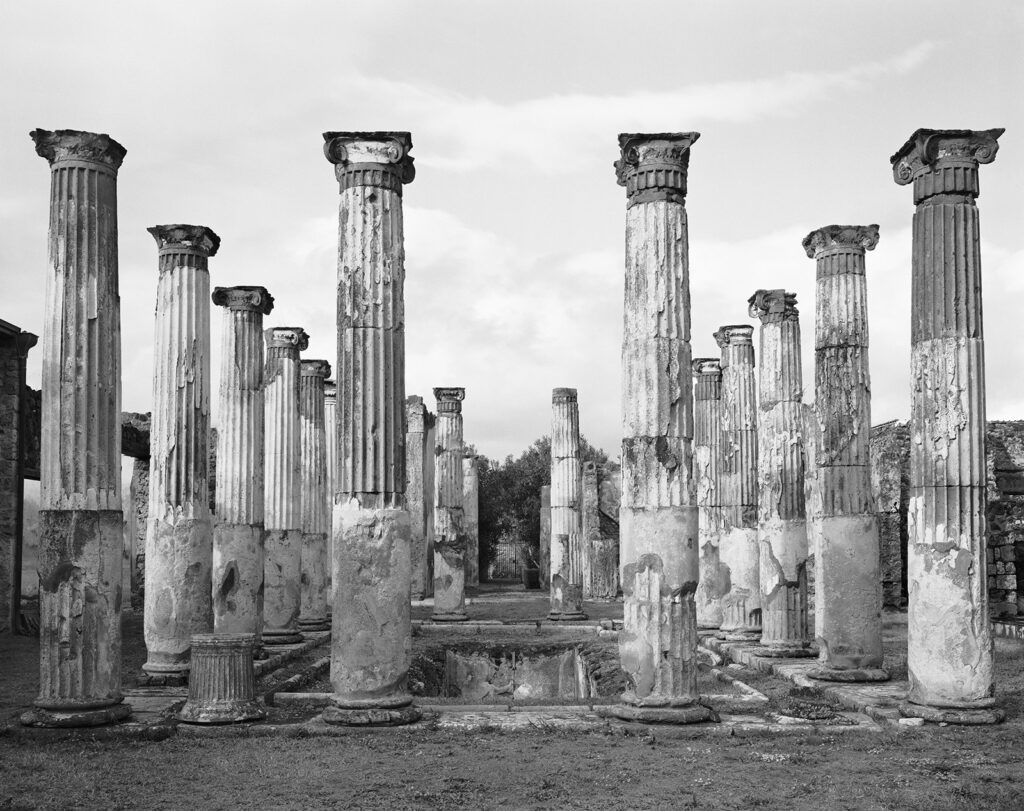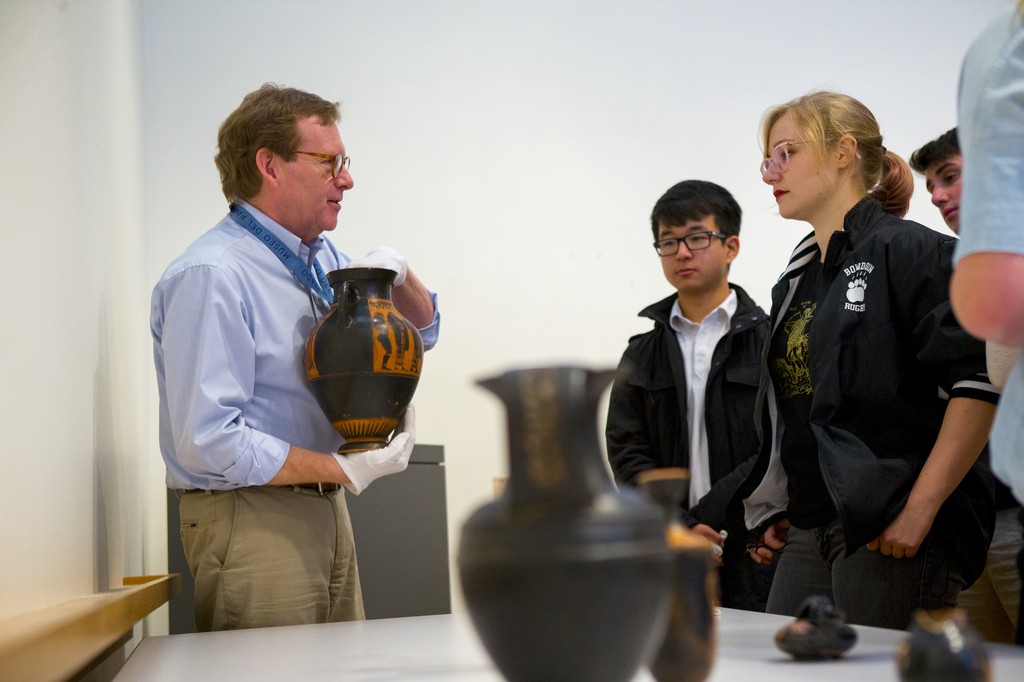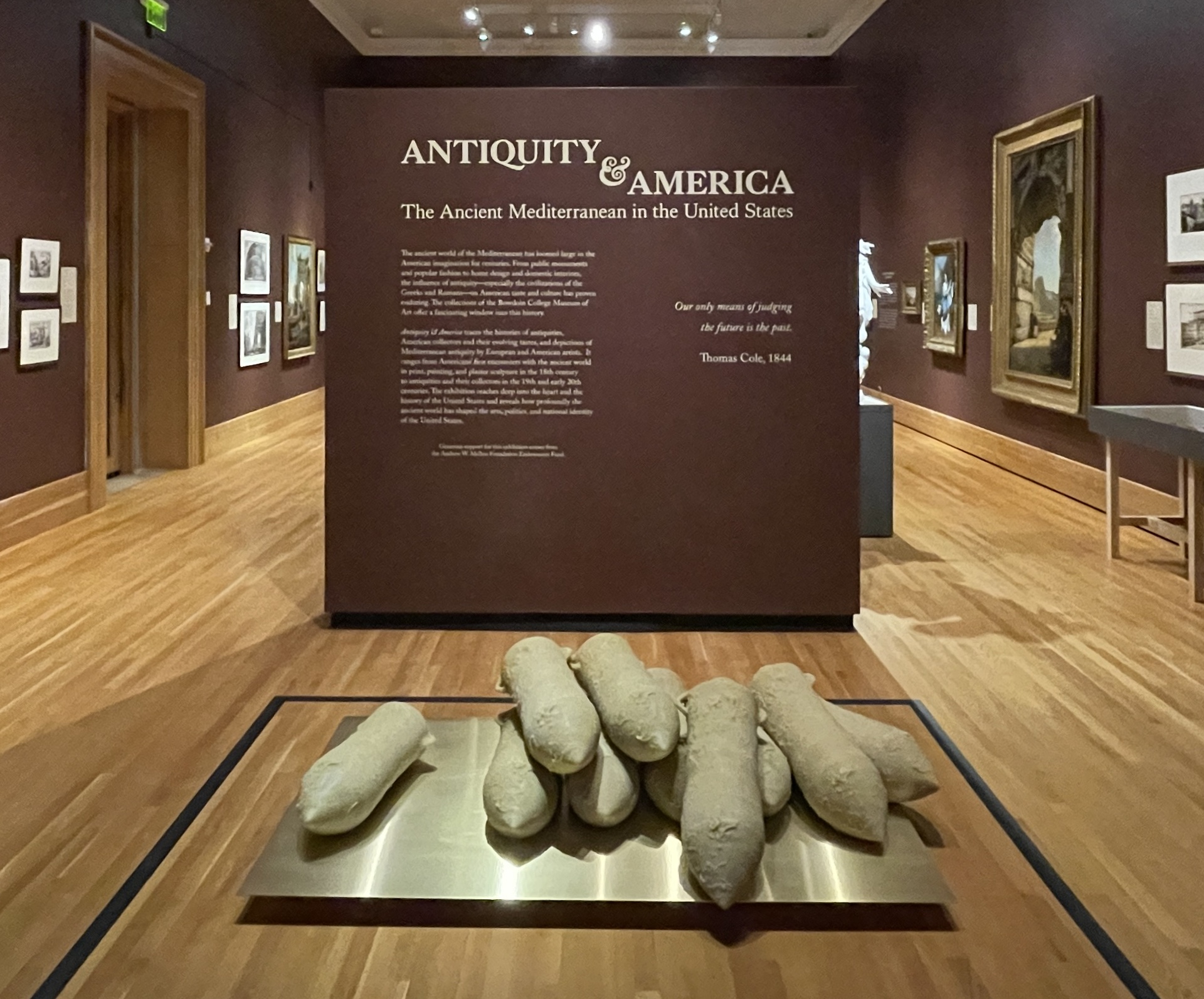Today, Greek and Roman literature is no longer the foundation of the liberal arts curriculum in America. Nor is classical Athens still held as the pinnacle in the history of art and human civilization. And, except in their imaginations (and portraiture), Americans never became citizens of the ancient Mediterranean, much less Romans or Greeks. But the passionate and ongoing pursuit of Mediterranean culture by diverse Americans and for different and often very personal reasons provides ample evidence that American identities, individual and national, have been profoundly shaped through reference to and consumption of the ancient Mediterranean world.
While the architecture of public buildings like the Bowdoin College Museum of Art recalls previous American generations’ affinity for antiquity, today’s popular culture reveals the ongoing ways the ancient Mediterranean is alive and well in the American imagination. Ancient myth and history are the subject of countless recent films, prestige television series, novels, and video games. Likewise, Bowdoin classes from across the curriculum continue to engage with objects from the antiquities collections of the BCMA and with prints and paintings that bring the past to life in the Museum’s seminar room. As a result, Bowdoin students have undertaken original research projects on everything from Greek vases to ancient coins, created pop-up exhibitions on Goltzius’s (1558–1617) print series of Ovid’s Metamorphoses and produced virtual exhibitions like “Spectacle” on aspects of life in the ancient Mediterranean world. The creative ways Bowdoin students engage antiquities at the Museum is a testament to the continued relevance of the Mediterranean past.
What about the actual antiquities? Attitudes and laws governing the collecting of antiquities have changed dramatically since the nineteenth century, when the bulk of Bowdoin’s collection was formed. And the Museum welcomes recent attention to role of antiquities in museums collections and the protection of cultural heritage. In 1977 the Adela Woods Smith Trust was established for the purchase of Greek art in honor of Bowdoin alumnus Harry de Forest Smith (Class of 1891). The trust has enabled the Museum to build its antiquities collection over the last three decades and recent acquisitions are on in the exhibition. Care has been taken to ensure acquisitions adhere to international law and ethical standards for museums. The Museum is committed to the protection of cultural heritage in cooperation with partners around the world as well as to educating the public through exhibitions and programming.
The Bowdoin College Museum of Art still believes that museum institutions across the world should acquire and display antiquities from the ancient Mediterranean and beyond. In many ways, museums, which operate for the public good on a non-profit basis and are dedicated to education and sharing knowledge, are ideal places for ancient art and artifacts to be held in trust. However, a belief in the fundamental good of museums should not blind us to the fact that museums are not neutral spaces, and that the behavior of museums and museum professionals has not always been for the public good. Continued acquisition and display of ancient art and artifacts must be coupled with an evolving understanding of the care of cultural heritage and of the complicated—all-too-often appalling—histories of collecting that have been marked by power imbalances, colonialism, and often, outright theft and looting.



